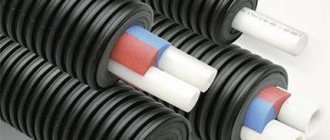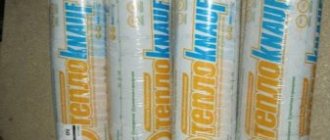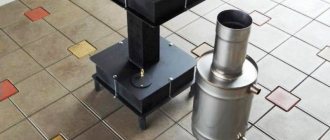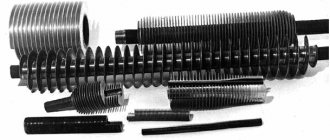Thread sealant is designed to make gas, heating or plumbing pipe connections as tight as possible. When choosing a suitable option, you should take into account all the features of thread sealants, navigate among the whole variety of types, keep in mind both old-fashioned sealing methods and the use of modern anaerobic gels.
Peculiarities
When undertaking a major overhaul, many people think about the tightness of the pipes as the last thing, but in vain. After all, it depends on how high the probability is that everything could be ruined by an unexpectedly occurring leak. This is especially true when pipes run close to expensive equipment: the damage to the family budget will be more than noticeable. However, many find the simplest solutions, using improvised means to seal the thread: tow, threads, plasticine. All this does not provide the necessary insulation. And now it’s time to pay special attention to professional thread sealants.
Professional materials include fum tapes, Teflon threads and anaerobic gels. It is worth dwelling on the latter in more detail. They have recently been used more often than others, as they provide an optimal level of adhesion to pipes, completely sealing the threads. Properly applied anaerobic sealant can withstand pressure of 50 atmospheres, not to mention vibration loads. In general, such a sealant is the best choice for household use, and it will work just as well on professional sites.
The main feature of anaerobic gel is that it begins to harden only when the nut or connection is tightened and the air access to the sealant is blocked. As a result, the connection turns out to be, one might say, monolithic, and practically no mechanical effort can break it. Only ultra-high temperatures help, which can only be achieved using special tools (for example, a hair dryer). It is safe to say that heating pipes can also be sealed using gel, and the durability of the joints will be excellent despite temperature changes.
If you apply anaerobic gel according to all the rules, it will last for 5 years or longer. If the technology has not been properly followed, then the guaranteed service life will be only a year. However, even a one-year warranty is more than you can expect when using unprofessional products and materials. Many people complain that anaerobic binders are too expensive (the average price varies from 1,500 to 2,000 rubles per 50 ml tube), but practice shows that such sealants are worth the money, because repairs if something happens will cost much more. In addition, the gel is economical, and it is quite possible that such a tube will be enough to seal all the plumbing and communication pipes in the apartment.
Thus, we can say with confidence that anaerobic sealants owe their popularity precisely to their characteristics.
Kinds
Based on their base, anaerobic sealants are divided into those whose composition is based on an oligomer, and those based on polymers of the acrylic group. Both have similar qualities: they can withstand high pressure, are not subject to the negative influence of mechanical loads, and so on. The difference is important only for professional chemists; construction specialists do not pay attention to this parameter when choosing.
It is much more important to separate sealants according to the degree of fixation. There are options for strong fixation, medium (universal) and low.
Low degree fixing agents are used when it is necessary to seal a small diameter pipe connection. The clamp does not tolerate vibrations and fluctuations, and the pipe itself can be easily untwisted using available tools. This makes the use of low-fix sealant an excellent choice when you need to connect pipes only temporarily, and you plan to dismantle them in the near future. This type can also be used for long-term use, but provided that during operation there will be no significant loads on the threaded connection.
Medium hold pastes and gels are most often used in everyday life. They are suitable for sealing heating systems, gas pipelines, water supply systems, and their use is absolutely harmless and does not change the quality of drinking water. That is why sealants of this type are called universal. They firmly fix the thread, but the joint can be dismantled in the future, only for this it will be necessary to use specialized equipment. The clamp can withstand the loads generated by batteries, water supply pipes and plumbing fixtures.
Strong fixation is not needed at home. Such sealants seal the pipes forever and further dismantling is impossible. They are usually used in industrial production: plants, factories, and in the construction of the city sewer network. These clamps are much more expensive than household ones and require special knowledge and skills when working with them, because you will have to act quickly and accurately. The connection is inextricable and in the future, if necessary, the joint will have to be sawn.
Frequently used medium-fix sealants are also classified. In this case, the classification category is the degree of viscosity of the drug. The smaller and more frequent the threads, the thinner the sealant must be so that it can optimally fill the entire air space of the joint. The maximum diameter of pipes for which anaerobic gels and pastes are produced is 4 cm. Large pipes are sealed in other ways.
Linen thread
Using flax thread is the oldest method of sealing threads.
The only advantage of this product is its low price and constant availability. Even if no other sealants are on sale, flax thread will definitely be available. But the material has a great many disadvantages:
- Difficult to install on threads. If you don't have the skill, you're unlikely to get it right the first time. If a mistake is made during winding, such a joint will quickly unwind, nullifying all your efforts.
- Small operating temperature range. Linen threads practically do not tolerate heat, so they cannot be used to insulate batteries and radiators. They will quickly collapse, leading to leakage.
- Hydrophilicity. Linen thread absorbs moisture well, as a result of which it swells greatly during operation. This may cause the pipe connection to burst. Similar cases are possible when we are talking about pipes made of fragile materials, such as aluminum. However, flax thread is still used to insulate those pipes through which water does not flow.
Teflon or plumber's thread
Teflon or plumbing threads are in many ways similar to flax threads. In the same way, there is a need for correct winding, but this is the only drawback they inherited from their natural “predecessor”.
Teflon threads are impregnated with special compounds that make them universal. They function well both when insulating water pipes, gas pipes and others. Compared to the previous case, the plumbing thread guarantees a good fit and does not fall apart for a long time. It can withstand high temperatures without anything happening to it.
Teflon threads are absolutely safe. They do not release anything into the pipeline, so they are suitable for use on drinking water pipes. However, it is better to clarify this point further.
Some cheap samples are intended purely for technical use.
FUM tape
FUM tape is one of the most popular options, as it is easy to use and has a low cost. All you have to do is wrap a piece of tape around the threads and then tighten the nut or fitting tightly.
However, this is not the main advantage of the tape. It does not affect the thread. If other materials fall apart or stick, then the FUM tape can be easily removed completely by simply unscrewing the thread. At the same time, the tape is completely safe and is excellent for sealing water pipes.
Unfortunately, the tape cannot fix the connection, as they say, tightly. Vibrations or mechanical stress will weaken the joint until a leak inevitably appears. The only means of prevention is to periodically tighten the nuts. Due to this drawback, it should not be used to seal joints on those pipes through which water flows under high pressure.
Non-hardening
This type is relatively new for the Russian consumer. These compounds are produced in the form of a paste, with which you need to thoroughly process the thread, and then simply tighten the nut. It’s also easy to unwind it in the future.
The viscous substance does not glue the pipes together, but simply fills cracks and gaps, preventing water from leaking out. The composition is absolutely harmless to humans, so such sealants can be used in plumbing work.
Do not use sealant paste in cases where the water supply is under high pressure. Then the water will displace the sealant and a leak will form. Unfortunately, there are no means of prevention here, so you will simply have to refuse to use such a remedy, choosing some other, more suitable option.
Hardening
Such substances have high strength characteristics. The fixative sealant takes a long time to dry. Time may vary significantly from manufacturer to manufacturer. However, this is the only drawback of such products.
After applying and tightening this sealant, you must wait the time indicated on the packaging before starting testing and active use. This is especially true when water is supplied under high pressure. It is worth noting that the sealant tolerates prolonged exposure to water under high pressure, since it is almost impossible to displace it after it has dried.
There are products on the market with certain degrees of fixation.
It depends on the degree exactly how, if necessary, you will have to untwist the pipe: simply apply more force or break it.
Anaerobic
Today, anaerobic fixatives are the latest development, quickly gaining recognition. They are suitable for use by both amateurs and craftsmen. Sold in convenient 250 ml tubes and suitable for long-term storage.
The operating principle of anaerobic sealant is as follows. In the open air, it retains a liquid consistency, so it can be easily applied to the thread without fear that it will “set” ahead of time. After the nut is tightened, a chemical process begins, the sealant crystallizes, turning into plastic glue and making the joint completely monolithic. The full reaction time takes no more than 3 hours, after which full operation can begin.
Dismantling is carried out using heat: you need to thoroughly heat the joint, after which you can unscrew the nut.
This method does not work with strong-hold sealants.
Sealing gel
Thread sealants from this category are rarely used in everyday life. Basically, they have found application in the automotive industry, since it is convenient for car enthusiasts to carry sealant in the form of a gel with them, so that, if necessary, they can quickly fix a broken part.
The main purpose of gels is not sealing, but strengthening joints. They make them more durable and resistant to vibration and mechanical stress. This is why many people encounter such difficulties when naively trying to unscrew any bolt on the engine: even at the factory they are treated with a sealing gel.
The only way to deal with a joint treated with such a product is to heat it well.
Otherwise, you may waste your energy without achieving the desired result.
Best car fasteners
Permatex 59214
Heat-resistant medium hold agent thickens and secures threads. Leaks are not allowed and are leak resistant. Adjustments are allowed within 24 hours. The substance in question can be used to seal turns, plugs, and other threaded connecting parts. The presence of Teflon serves as an obstacle to mashing. Its leakage into the system itself is prevented. Calmly withstands pressure up to 700 atmospheres and temperatures up to + 205 degrees.
Permatex 59214
Advantages:
- heat-resistant product;
- withstands high pressure and temperature conditions.
Flaws:
- not detected.
Permatex High Temperature Thread Locker
A heat-resistant, strong-hold thread adhesive is an improved replacement for lock washers. It copes remarkably well with gluing metal surfaces in the event of the loss of oxygen access after the assembly process.
Scope of application: locking and preventing loosening during vibration, is not subject to corrosion, and secures well thermally and highly loaded connecting threads. Operating temperatures range from – 54 to + 232C°.
Permatex High Temperature Thread Locker
Advantages:
- withstands high temperatures;
- the cost of the material corresponds to its quality.
Flaws:
- not detected.
ABRO TL-342 THREADLOCK
Functional fastener for fasteners larger than 6mm. Carries out sealing of fittings, valve cover bolts and pan bolts in any places where there is a need to replace spring split or bushing washers.
ABRO TL-342 THREADLOCK
Advantages:
- the ability to create a high-strength elastic material that will not lose its benefits over time;
- imparts vibration resistance when sealing joints;
- the fixative is resistant to most chemicals;
- can be easily removed using a hand tool;
- capable of quick drying in 20-30 minutes on metal surfaces;
- hardens completely within 24 hours;
- has average strength.
Flaws:
- not detected.
Colors
The most important criterion by which one can immediately draw a conclusion about what the sealant is used for and what properties it has is color. Anaerobic thread sealants are produced in several colors.
Blue
Typically, blue anaerobic sealants are only suitable for metal pipes and parts. The joint turns out to be resistant to all kinds of influences, be it water, gas, antifreeze, gasoline and the like. The blue retainer is a high-quality seal that has only recently begun to be used in domestic conditions. Previously, it was only available in industrial production, for example, in the construction of defense structures, rockets, and spaceships. Application is limited only by the diameter of the pipes: it should not exceed two centimeters. Dismantling can be carried out without special equipment by applying medium mechanical forces.
Red
Red sealants are needed to seal worn, worn out threads. Red sealants are also used to seal joints of ferrous metal pipes. Red fasteners set faster than others, but this does not in any way affect their strength properties. They are resistant to high pressure and temperature changes. The diameter of the pipes that can be sealed with this anaerobic gel is no more than 3 cm. Dismantling will necessarily require heating the joint. When repairing, it is not necessary to remove excess sealant from the threads; you can apply a new layer directly on top of them.
Green
Green sealant is a low-strength variety. It is suitable for temporary connections of both plastic and metal pipes. When dismantling it, no effort will be required: it will be enough to unscrew the connection as usual. Manufacturers claim that the difference between the blue and green options is small, but this is not the case. Blue is resistant to all kinds of influences and vibrations, which cannot be said about green. The green sealant can be used to seal pipes up to 3.81 cm (1.5 inches) in diameter. The important point is that the threads must not be damaged.
Thread sealers
Let us list the known methods of sealing plumbing threads .
It is impossible to single out any particular seal here; each of them is exceptional in its own way.
- FUM tape.
- Sealing thread.
- Plumbing flax.
- Paste (drying and non-drying).
- Anaerobic glue - sealant
Brief description of seals for plumbing threads
Purpose of thread sealant
Sealants for threaded connections are constantly being improved, new products with improved characteristics are appearing to ensure high-quality sealing of pipes for a long time. Without sealing around the joints, there is a high risk of leakage, which is why choosing the appropriate sealant is of utmost importance.
Undesirable phenomena cannot be prevented solely by washers and strong tightening. Threads and tapes are often used for sealing; their task is only to seal; they cannot protect against negative influence factors. It is being replaced by modern thread adhesive in the form of gels and anaerobic compounds.
Plumbing thread
Sealing threads with plumbing thread
Plumbing thread is an excellent winding material for pipes with one drawback: its high price. It cannot be torn by hand and is suitable for sealing all threaded joints (even those that have a torn surface from a bad thread cutting tool). As for plastic parts, the tightening torque required when using threads is not the same as when using flax. Plumbing thread can be used for all parts.
Characteristic properties
To work with sealant, you need to know its characteristic features. This will allow you to choose exactly the composition that is suitable in a particular case.
All sealants differ in the following technical features:
- Fluidity or viscosity. For sealing small joints, mixtures in the form of a paste are best suited. When you need to seal a large seam, then you should use a liquid sealant. The greater the width, the thinner the composition. The mixture will flow into all gaps, completely sealing the joint.
- The strength or force required to separate a joint. Maximum fixation sealants cannot be unscrewed, you will only have to break them. A low-strength composition will allow you to do this with little effort. With medium fixation, you can unscrew it using additional tools.
- Temperature, that is, the maximum limit that the composition can withstand without losing its properties. It varies greatly for different sealants. Most compounds can withstand from -50 to +150 degrees. For extremely low and high temperatures, you need to buy a specialized thread sealant.
- Hardening speed. It is usually indicated on the packaging of the sealant. The rate of hardening depends on many factors, including the quality of the composition itself and the conditions under which sealing is carried out. The pipes can be used after this period has expired, otherwise depressurization will occur.
- Scope of use. There are many sealants available, but not all are suitable for water pipes or pipes that carry gas. It is necessary to select a mixture in accordance with the possibility of its use for individual jobs.
Rubber O-rings
This type of seal is used for connections where the distance between the ends does not exceed 1 mm. RUK is not used for sealing couplings in which the end of the threaded pipe does not abut the end of the nut or other pipe. They are used to seal water tap connections.
Rubber O-ring
If the old RUK is damaged and the tightness of the connection is broken, turn off the water, disassemble the connection and remove the seal. If it is not possible to purchase a ready-made RUK, take rubber (for example, from a wheel tube of a car or truck), attach the damaged seal to it and trace the contours with a pen. If the rubber is thinner than the old RUK, make two or three rings. Cut out a new seal and insert it into the nut. If necessary, trim off any protruding parts. A correctly marked and cut seal is inserted into the nut with force. Reassemble the connection and check for leaks.
Advantages and disadvantages
Each type of thread sealing has its pros and cons. Previously, threads and FUM tape were actively used for this purpose, but now they are significantly inferior to modern sealants. And there are many reasons for this.
Benefits of using thread sealant:
- Preservation of properties during temperature fluctuations. Does not affect the quality of sealing.
- Resistance to mechanical influence factors. It will not be possible to unscrew the nut without effort; to do this you will have to make an effort or use additional tools. This is an important condition, because water passing under pressure creates vibrations, which cause gradual unwinding.
- Penetration into hard-to-reach areas. The mixture fills all the cracks, the parts fit tightly to each other, creating complete tightness.
- Ease of use. Anyone can figure out thread sealants. They come with detailed instructions and tips.
- Low consumption. Use sealants sparingly; you only need a small amount of the compound to treat several pipes. For example, one bottle is enough for an average apartment.
But we should also dwell on some of the disadvantages of using sealing compounds. Such a plus as reliable grip turns into a minus when it is necessary to carry out repair work and uncouple the pipes. After using a high-strength sealant, the only way to disconnect is by breaking. Price also matters. The use of sealants will be more expensive than traditional thread sealing options.
Sealants are not suitable when repairs need to be carried out quickly, restoring the operation of pipes as soon as possible. The system can only be used after the mixture has completely hardened. There are not many disadvantages to sealants; they are becoming increasingly popular.
Application area
Thread sealant is used in many areas of human activity. It is used to seal water pipes in apartments and private houses. But such materials are not suitable for insulating street pipes due to the fact that they have large diameters. Also, sealant for threaded connections of water supply pipes can be used for joints of sewer pipes.
In plumbing, a special plumbing compound is used. Its feature is resistance to temperature changes. This is especially important when connecting a washing machine. But, at the same time, the material should be selected so that it has adhesion to the plastic, otherwise special activators will have to be used.
To seal threads in heating systems, a composition that is resistant to temperature changes is also needed. Gas pipelines should use materials that are resistant to aggressive environments.
Thread sealants are also used in machine tool industry, automotive industry, aviation, water transport, medicine, construction, etc.
Application
During production, anaerobic sealants are packaged in plastic bottles of varying volumes. The dropper on the bottle allows you to quickly and conveniently apply the sealant to the surface.
Stages of applying glue:
- Degrease the areas to be joined and first remove dirt from them. Dry the surfaces thoroughly before applying glue.
- Shake the bottle well so that the composition inside becomes homogeneous.
- Apply glue to the surfaces to be joined and fix them in the desired position.
- Remove excess product with a rag.
- The composition hardens within 15 minutes.
The curing time depends on the size of the joint, the characteristics of the material and the room temperature. The gluing result will be of the highest quality if the sealant is applied to the entire bonded area of both parts, evenly distributed.
Tip Heat the parts to be glued if the temperature is below +15˚ C to speed up drying. At low room temperatures, the composition hardens slowly.
Even the most modern water pipes have threaded connections, as they also require high-quality sealing.
In the recent past, tightness was achieved using sealing threads, flax strands, and FUM tape.
The anaerobic sealants that replaced them protect metal surfaces from corrosion and provide excellent air and water tightness of threaded connections.
Many companies produce sealants; when choosing an adhesive composition, you should pay attention to some factors:
- what joint strength should be obtained as a result of gluing;
- the conditions under which the joints connected by the composition will be used;
- Will the part need to be disassembled later?
- thread characteristics.
Loctite sealant
The most popular anaerobic sealants on the Russian market are:
- Loctite (Loctite). Liquid compounds and sealing threads are produced under this brand. They are able to prevent gas or liquid leaks, increasing the strength of pipes several times. The cost of sealants from this manufacturer depends on their area of application and composition characteristics. For example, 50 ml of Loctite 577 universal glue costs on average 1,750 rubles, a 50 ml bottle of Loctite 542, used for small carvings, costs 1,784 rubles.
- Santekhmaster is a domestically produced glue from. The composition is resistant to antifreeze, gasoline, alcohol, and does not lose properties at elevated pressure and temperature. The product is used to seal threaded metal and flange connections, it is non-toxic and has no unpleasant odor. Prevents corrosion. A 15 g tube will cost at least 145 rubles.
- Anatherm is used to seal pores and cracks, fix threads when assembling parts and welds. As well as durable and very fast gluing of parts, repair and restoration of components and mechanisms. The cost of a 200 g bottle starts from 2400 rubles.
How to delete
It may be necessary to remove glue from threaded connections immediately after gluing or after the composition has completely hardened. In the latter case, you will need a hair dryer and a wrench.
Sealant removal steps:
- Turn on the hair dryer and direct a hot stream of air to the joint.
- Gradually the adhesive will begin to crumble, then remove the remaining sealant with a rag.
- Disassemble the connection using a wrench.
There is no need to completely remove the remaining adhesive; a new layer of sealant is placed on top of the old one without loss of effectiveness.
The best curing fixatives
LMG MG-414
Using a threaded fastener, the possibility of spontaneous loosening at the point of tightening is removed. In terms of properties, it replaces mechanical methods of fixation (grip washers), retaining rings and cotter pins. The advantages are an increase in connection strength, thread oxidation is prevented, and there is no need for additional tightening of bolts after installation. Characterized by resistance to vibration, shock loads and thermal expansion. Highly resistant to all types of technical fluids.
LMG MG-414
Advantages:
- replaces mechanical fixation methods in terms of properties;
- vibration resistant.
Flaws:
- not detected.
Mannol 9927
Used on connections with heavy loads. Prevents loosening and self-loosening, replaces mechanical fixation methods.
Mannol 9927
Advantages:
- perfect sealing;
- affordable price.
Flaws:
- not detected.
AVS AVK-133
Provides the ability to fix and seal non-separable structures subject to loosening, including shafts - bushings, bearings without a press fit. The substance polymerizes in cracks up to 0.4 mm in the absence of air, ensures reliability and will not allow corrosion to occur. Quite resistant to fuel, water, gas and engine oil.
AVS AVK-133
Advantages:
- possibility of fixing and sealing non-demountable structures;
- affordable price tag.
Flaws:
- not detected.
Manufacturers
You can argue for a long time about which manufacturer is better, so the simplest thing is to turn to reviews. Several brands receive the most positive ratings.
- Loctite. Universal glue from a Chinese manufacturer, however, many users noted that constant care of the cap is required.
- Sealup. Products from Italy are of high quality and easy to use. There is a guarantee seal, which stands out as an advantage, since it is possible to check how hermetically sealed the packaging is.
- Abro. One of the few sealants that can be used at negative temperatures - down to -20 degrees.
- Mannol. This option has one of the longest shelf lives, but it is impossible to work with it in a confined space due to the pungent odor.
- Wurth. This German-made fixative is considered to be of the highest quality. Despite the high cost, it is popular.
- Tangit Uni Lock. Manufacturer from Belarus. Specialized gels are produced for both plastic and metal.
- Siseal. Anaerobic gels of this brand are often used. Sold in containers of 100 g.
Tips and tricks
Professional craftsmen share several recommendations on how to make sealing threaded connections as simple and durable as possible.
- Do not be afraid that uncured sealant will come out from the inside of the pipe. It will not harden and during the operation of the water supply it will simply be washed off with water. Anaerobic gels are absolutely harmless, but it is still better to leave the tap open for a while so that excess sealant is completely removed.
- When screwing connections treated with thread sealant, there is no need to tighten the threads with wrenches. Maximum hand effort will be enough, but you really need to wrap with all your might.
- If the pipe is fragile, then there is no need to try to unscrew the joint treated with sealants. Heat must be used immediately. 170 degrees will be enough.
- If possible, it is best to avoid using sealants for temporary installations. Disassembling connections will require a lot of time and effort, which is not fully worth it. It is best to resort to using sealant threads or flax for temporary use.
For information on the features of thread sealant, see the following video.
Automotive
Car seals have long outgrown conventional repair products. Currently, such sealants are used for many jobs that are performed when assembling a car at the factory. Often, with the help of such a mass, the fit of car gaskets is strengthened, and sometimes it is even used instead of a gasket. Nowadays it is very difficult to imagine repairing any auto-moto equipment without the use of sealants.
The main thing is to make sure that it is of high quality before use. Otherwise, you may stumble upon a material that will not hold oil or other liquid. If this happens, the work will have to be done again. Therefore, it is important to use only high-quality masses that are produced by trusted companies.











